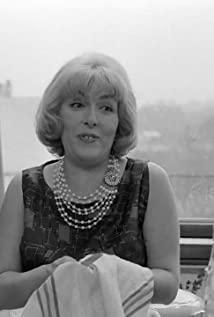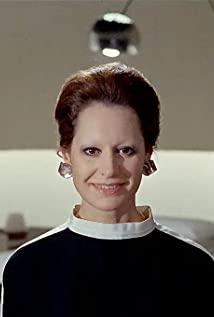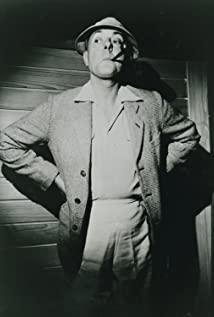This article is the original text in my WeChat public account Filmtopia~Welcome to pay attention to the discussion~
Original link: https://mp.weixin.qq.com/s/gAFgiTYOJmJ5P7KNMOuyug
Today I come to Amway’s two films related to the French New Wave film movement, "Play Time" shot by French director Jacques Tati in 1967 and "Prudent Charm of the Bourgeoisie" shot by Spanish director Buñuel in 1972. "(Le Charme discret de la bourgeoisie).
Play time
The prudent charm of the bourgeoisie
Why are these two films pulled together? I personally feel that their themes and shooting methods are similar, even if they are not the most representative films of the New Wave.
"Play Time" is a film in Tati's "Mr. Yu Luo" series. This somewhat comical film was introduced by Mr. Yu Luo, who has gone to Paris to do business, and shows the appearance of Paris as an industrialized metropolis. The advanced equipment at the World Expo, neatly organized office cubicles like chicken coops, tall and cold skyscrapers and glass windows, landscapes and situations are strung together by various characters, and the stereotypical and methodical modern world is vividly portrayed with typical details.
In the evening, Mr. Yu Luo came to the nightclub that was anxious to open for the decoration, and joined the party carnival. The coveted exaggerated scenes and jubilant dances collapsed the roof and the hall was a mess. The guests didn’t feel disappointed, they played even more crazily...
Another film "The Prudent Charm of the Bourgeoisie" is about the wealthy Senéchal couple inviting four high-class guests, including the ambassadors of the African country "Miranda", to a dinner at home. After accidents, remembering the wrong time, the Army suddenly came to the exercise, overslept and dreamed of dreams, which caused the dinner after the postponement to fail to go smoothly in the end. The dream situation and the plot of walking on a road with no end also make the ending and the authenticity of the whole event ambiguous...
The French New Wave (French New Wave) began in the late 1950s and affected the entire French film industry in the 1960s. The occurrence of this art movement has multiple historical and political reasons, as well as a philosophical background.
Before the First World War, the French film industry had world hegemony, and the first World War smashed France's transnational industry, and major French film companies went bankrupt. At this time, low-cost independent films have an advantage in the market, and art directors have the opportunity to lead a new film trend. Representative directors Godard, Truffaut, Rohmer, Chris Mack, etc. led the neo-realism, the film manual school, and the left bank film have appeared one after another. There is too much to talk about each director and style, and I will write in detail later when I have time.
The emergence of new realism comes from the rejection and rebellion of the directors' circles against quality traditional movies and the narrative style of complete scripts. The film has a strong personal touch of the director, which is different from the traditional objective narrative perspective of God, and the structure of cause and effect is clear. The subjective perspective enables neorealism to achieve "plus de realite".
The rebellious spirit of neorealism is also related to the long-term repression and conservative social environment. Under the cultural conservatism of French President de Gaulle at the time, the young people who grew up after World War II were more rebellious to find a new culture and a more vibrant artistic atmosphere. The influence of the rise of philosophical existentialism has caused people to think about the meaning of the world and the end of fate, and they have doubts about the rational-based capitalist social structure. The disillusionment of ideals and the nihilism of a society where consumerism prevails are brought into the film. theme.
Both "Playing Time" and "The Prudent Charm of the Bourgeoisie" are based on the post-industrial social structure that satirizes consumerism, the emptiness of the bourgeoisie, and technical rationality.
The philosopher Marcuse's theory based on the structure of industrial society is closely related to the background of the film and the environment of social movements at that time. Marcuse's works "Eros and Civilization" and "One-dimensional Man" both discuss the essence of "irrationality" in modern society.
His theory explores the changing way of governance. The traditional way of capitalist governance sees employers and laborers as clear opposition, but after the Industrial Revolution, people were imperceptibly ruled by technology and reason without knowing it. Technical rationality refers to the rationalization of technological development and the pursuit of technology. In the modern society at this time, technology has been placed at the highest position and has become a foreign object. Science and technology should serve people, but in the process of developing science and technology, people are enslaved by scientific concepts, and they develop numbly but forget the emotional happiness that makes people human. People gradually forget the meaning of love, confuse love with sex, and vent their pleasure through consumption and timely pleasure.
Modern technology is closely linked to the interests of the elite ruling class. Rulers always have the power to define and interpret science. Their centralization is based on rationality, and rebellion can easily be placed in a pseudo-science position. As a result, the seemingly rational and cooperative employment-labor relationship has given people the illusion of more freedom, but workers have actually accepted new enslavement and accepted the life of free time and privacy being fully infiltrated and manipulated by technology.
The two films naturally spell out satirical themes from everywhere, and the depiction of characters and life details makes the narrative full and true.
Let me start with "The Prudent Charm of the Bourgeoisie."
Different from the classic objective narrative structure of traditional films, the surrealist director Bunuel uses a vague and jumping narrative structure.
You can think of the philosopher Deleuze's analysis of "small type" and "large type" in "Motion-Image" here. In the narrative structure of traditional films in the past, the narrative sequence can be summarized as "large-scale", that is, situation-action-situation (situation-action-situation). Its logic is that the narrative begins by explaining the context of the general background, and then the character responds to the situation accordingly, such as responding to conflicts or adapting to change the situation.
In the "small style", it uses action-situation-action (action-situation-action) to speak more loosely. It reveals a certain aspect of the situation by actions, and then triggers new actions. In this way, the context of the story is not explained in its entirety at first, but is slowly revealed after the occurrence of small events.
This film can be regarded as an experimental application of the "small-scale" stitching shooting technique. Compared with the sequential logical narration, it is closer to people's natural way of cognition of the world, and brings a stronger sense of resonance, instead of letting the audience be outside the first place in the story world. Three perspectives follow the logic to understand the story.
In the film, the lifestyle of the bourgeoisie is not informed or defined by the audience in advance by the director, but is naturally reflected in the context of dinner and fate. The selection of details and the portrayal of each character more vividly enhance the irony.
The ambassador of the "Miranda" country smuggled drugs and conspired to carve up property with his official status, showing the corruption of the official class.
As an upper class of the "Miranda" in an African developing country, he has the superiority of the upper class on the one hand, but on the other hand he finds himself out of place in the upper class circle of France and has a low self-esteem in his heart. At the social dinner, people discussed with him the backward regime of "Miranda" and the rising crime rate. He angrily defended him and lost control after feeling humiliated.
The well-dressed French upper-class people arrogantly used stereotypes when discussing the national conditions of African countries. Poverty, lack of freedom, corruption, and high crime rates are all they know about socialism and the political system of the third world. They have never done so. Disdain to learn more.
After gatherings, ladies and gentlemen talk about cocktails, women's magazines, and constellations. Their lives are really empty and boring. Just like the end of the film, the six people are walking on a destinationless road, irritable and doing nothing.
The innovative shooting method of this film with more neo-realistic characteristics is the editing method.
In traditional films, images usually serve a coherent story timeline, which in turn provides the context for the entire story being told in a logical and coherent manner. Traditional montages are usually used to combine video clips at different time nodes and locations into a unified story line.
And new realism and later films are no longer limited to only treating fragments of images as nodes in objective events, but can be purely the realization of surreal content or the continuation of a feeling. The more important role of montage in new reality films is to combine audiovisual language to bring specific and special sensory effects and emotional experiences.
In this film, each dinner party is like an independent event rather than a strict one-by-one connection. The sense of break in each party situation is inserted from time to time without logical road walk scenes, and the audience is led to dreams unconsciously. In the scene, the narrative story has more subjective space. The ambiguity brought about by the narrative of break and jump also brings thinking to the audience.
Perhaps more than the last two dinner invitations are two levels of dreams, and the stories narrated in the entire film are fantasy. Maybe everyone in the party ended up just like the "Miranda" ambassador, eating desolately leftover meat in the refrigerator after waking up from a dream.
Let’s go back to "Play Time".
This neo-comic film shows the audience a picture of Paris in the 1960s. The structure of its prose style is somewhat similar to "The Prudent Charm of the Bourgeoisie".
Deleuze discussed the new comical film in "Time-Images"-its plot is no longer caused by the energy and behavior of the characters, but the autonomous plot brings the characters into a power beam and goes with it. And build the world together with the plot. The characters are no longer the protagonists of the story, but their typical characters and behaviors are used as symbols to show the theme. The film no longer only uses plot and description to shape the story background and main line, it uses visual and auditory symbols to show the main line background.
"Playing Time" is full of interesting and exaggerated detail symbols.
The large living room and floor-to-ceiling glass windows show the modernization of the metropolis and the advanced industry. The huge volume and cold tones of the building give the characters a sense of emptiness and smallness.
The character accidentally hits the floor-to-ceiling glass window many times, this detail setting is too cute.
In a large company with a meticulous division of labor, employees are mechanically busy.
The camera captures the front desk staff busy answering the phone and facing the customer’s consultation, exaggerated and interesting, but also sarcastic
Small cars have been popularized under the standardized production model. The parking spaces on the roadside are neatly planned, and the white-collar workers dressed in exactly the same rhythm are neatly side by side in the same car.
In a tall apartment building, people are separated by walls, and people in each room are doing their own things.
The radio frequently broadcasts commercial advertisements, which is annoying.
In life, you can always meet people who love to show off their wealth, typical characters under consumerism.
Oh, time is money, how in line with the "ethical spirit of capitalism"...
This lens is also very cute. Company executives who can’t sit well and act pretentiously...
Towards the end of the film, the partying guests collapsed the ceiling decoration. The situation in which the restaurant becomes ruin creates an impulse. The dramatic impulses replaced the traditional narrative description and became a new description style.
Compared with "The Prudent Charm of the Bourgeoisie," "Playing Time" is a bit warmer and more mischievous.
I can’t finish talking about my love for the new wave and Jacques Tati. I'll stop here this time.
View more about Playtime reviews










